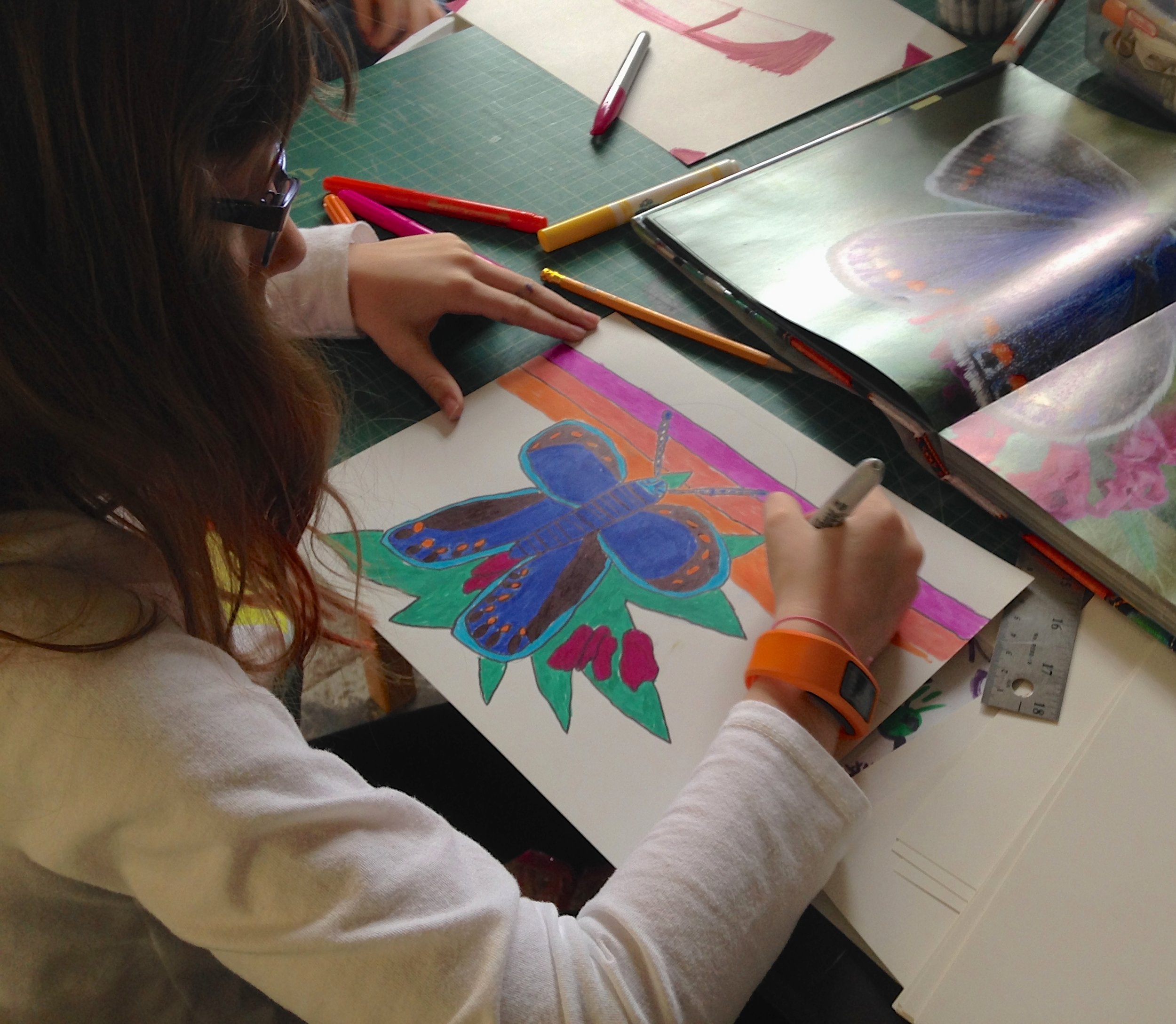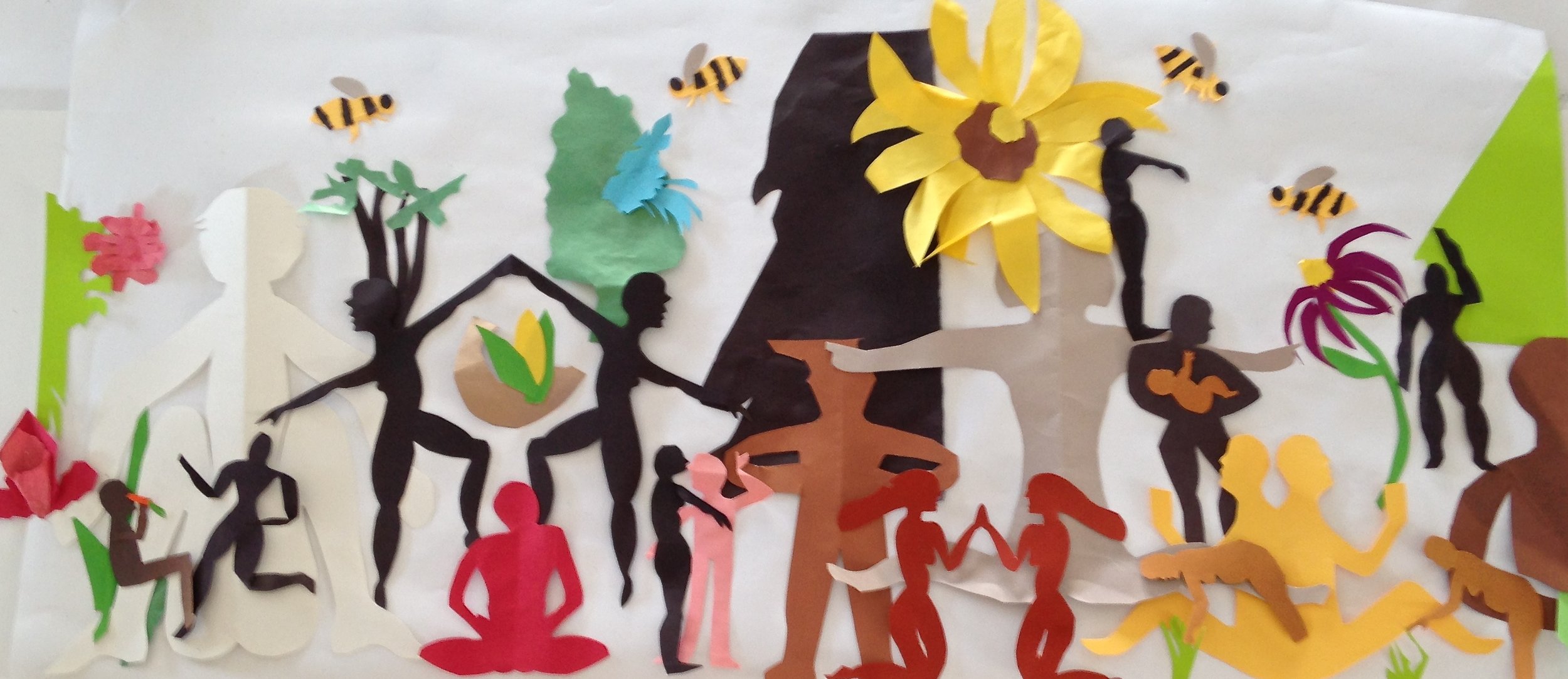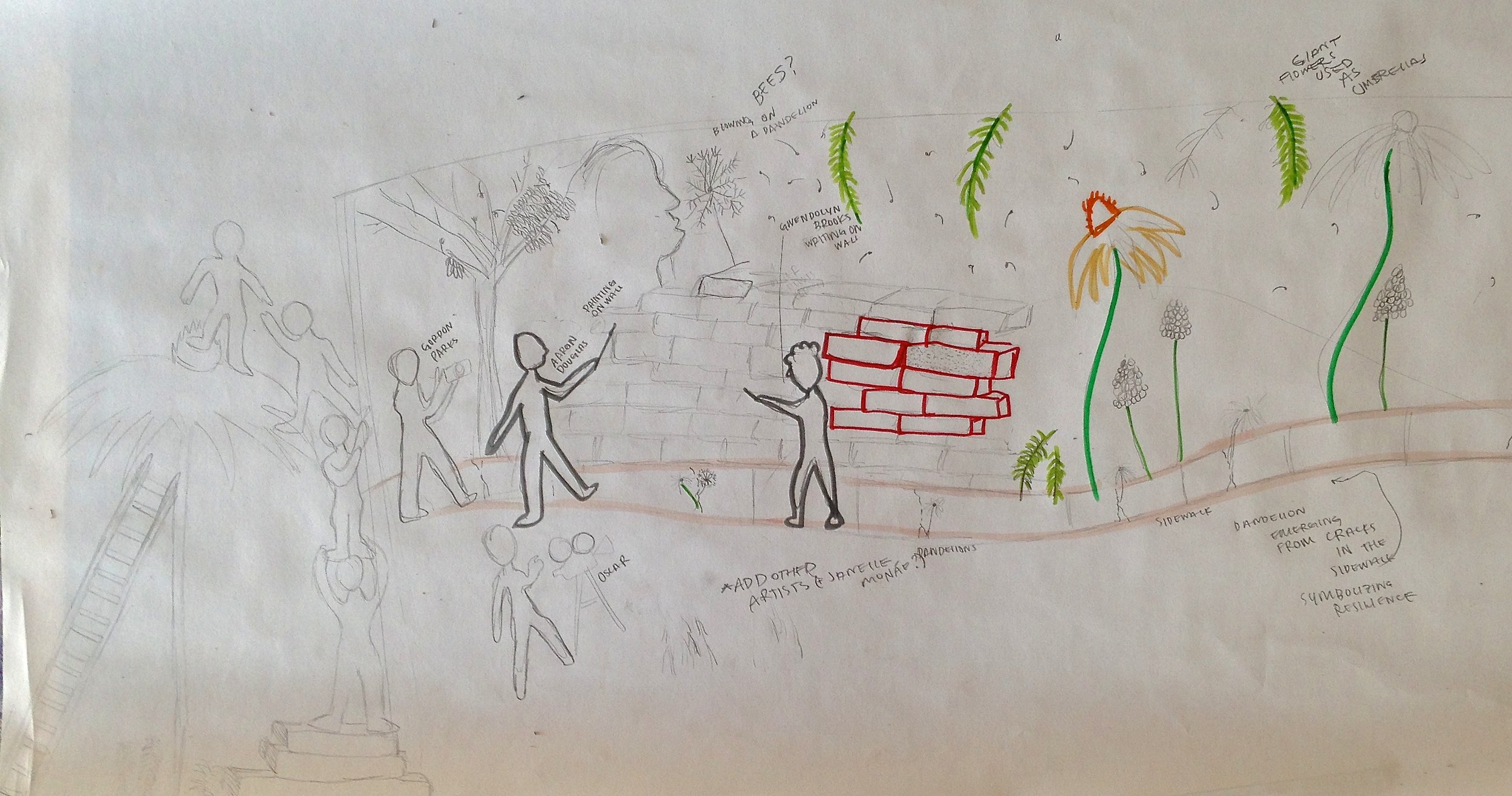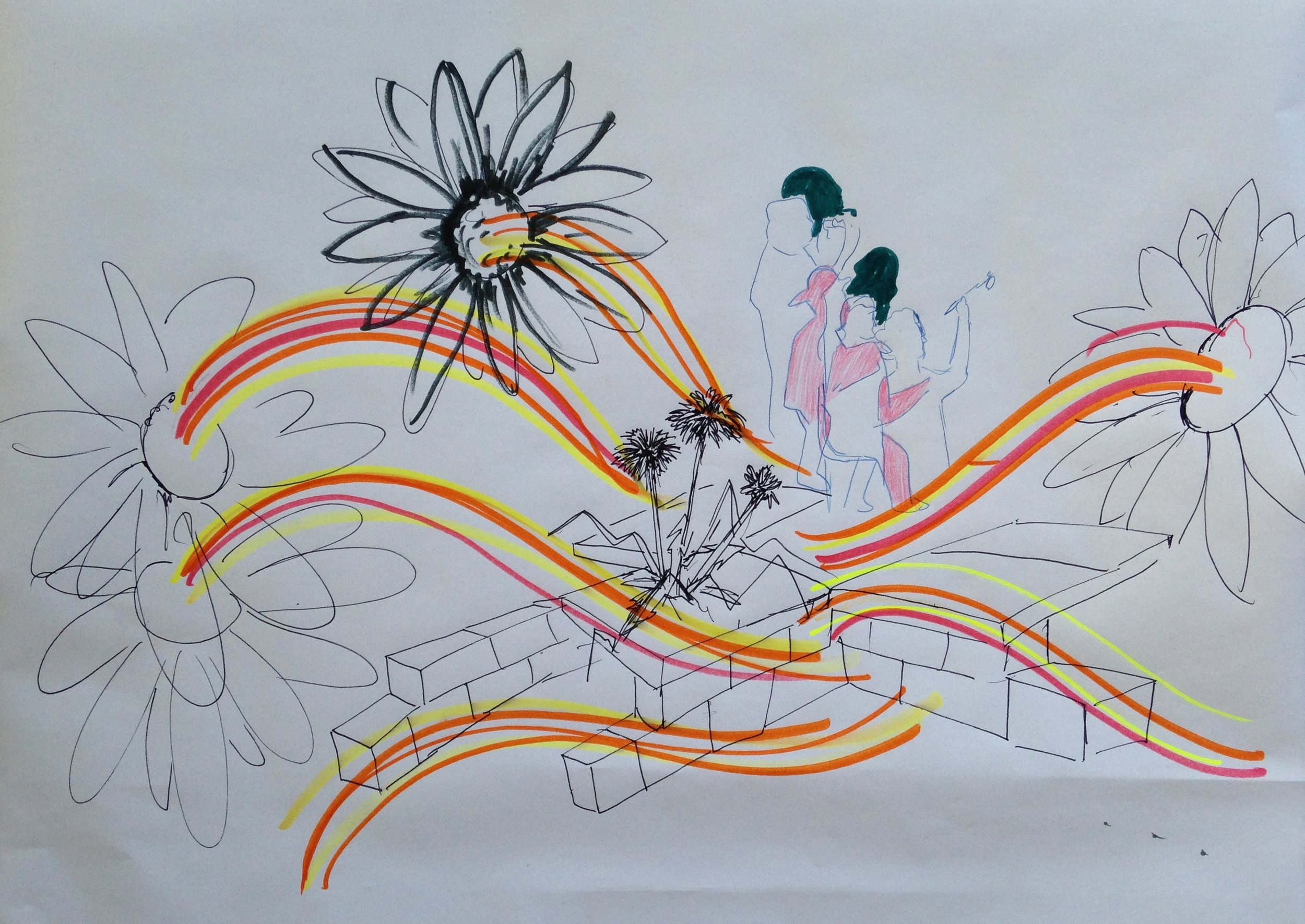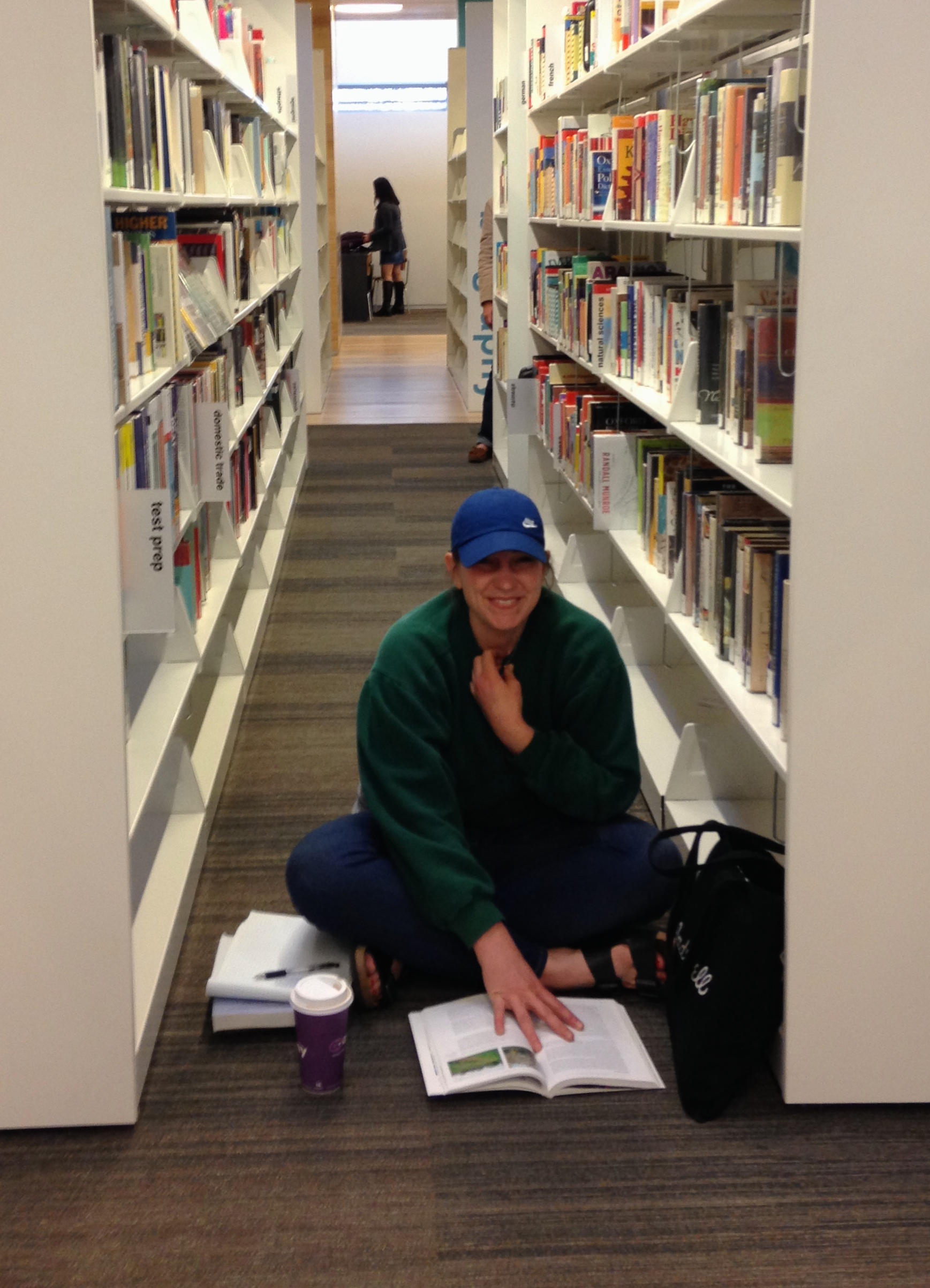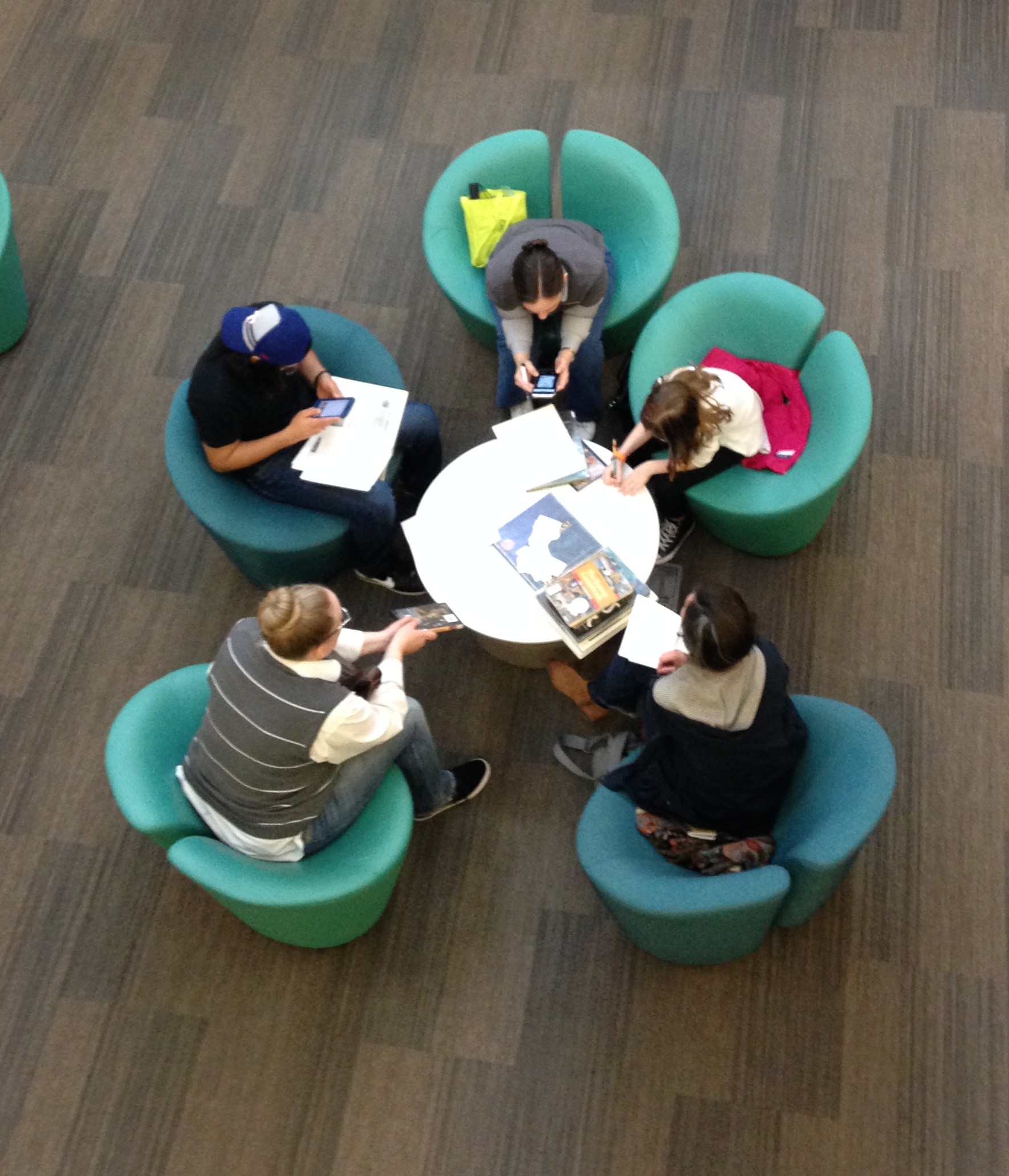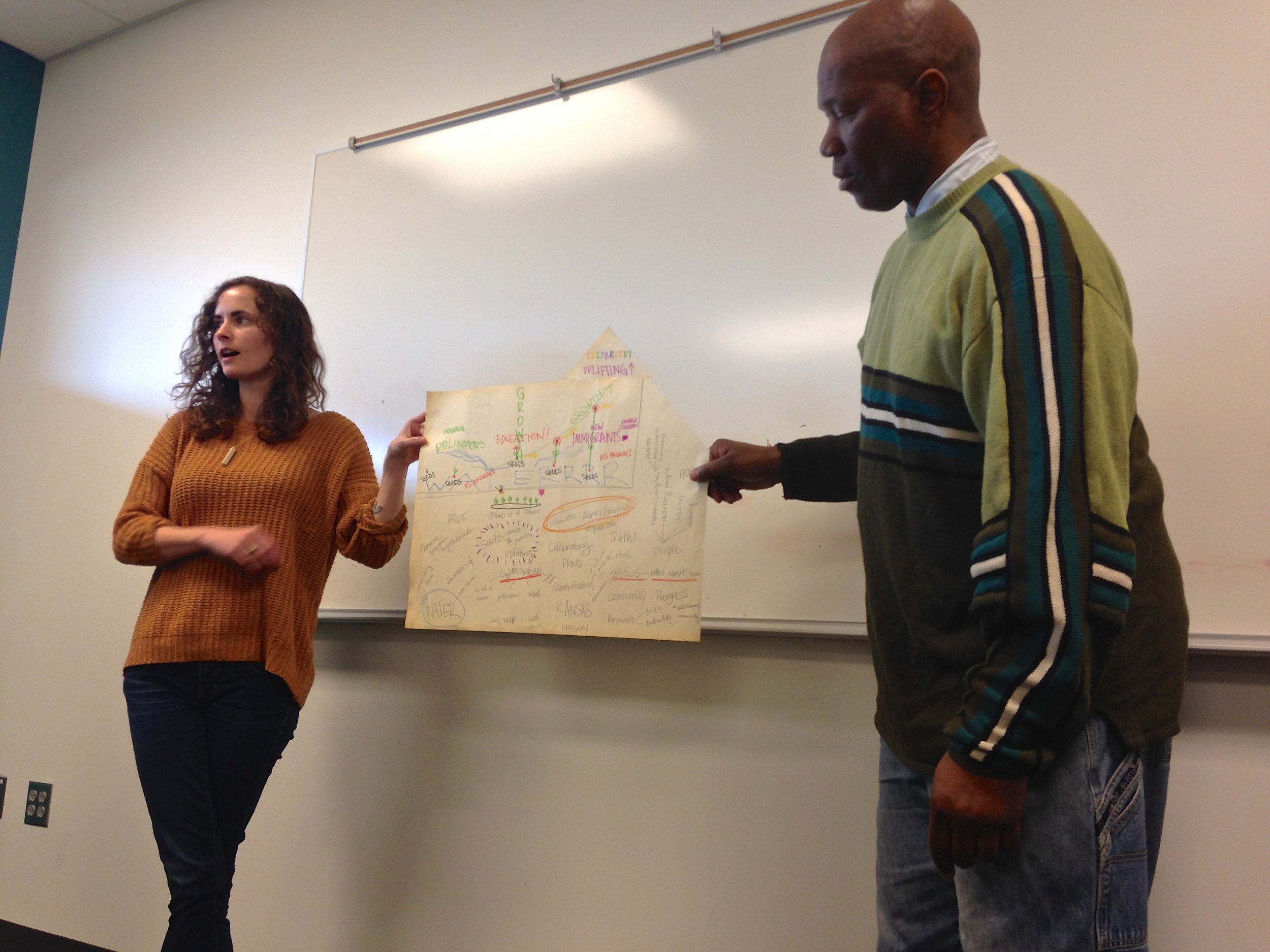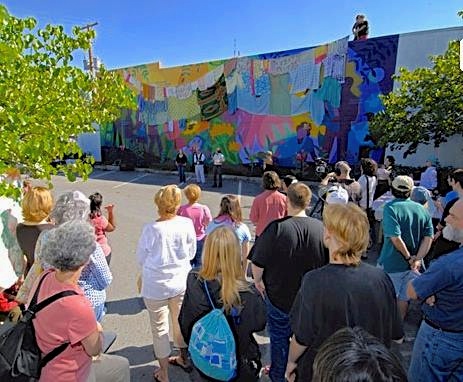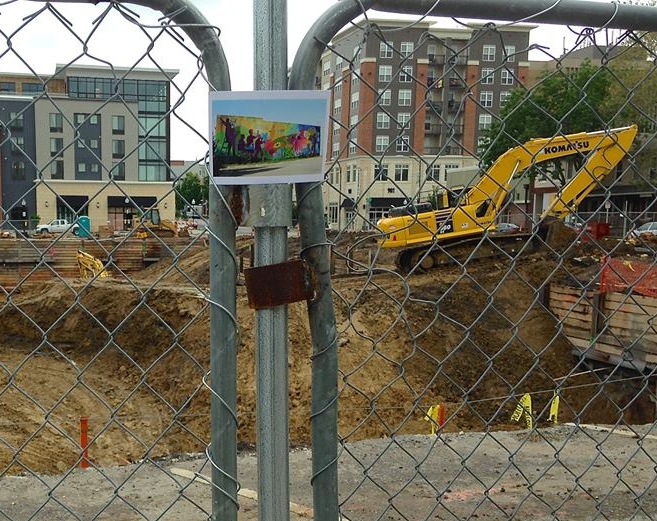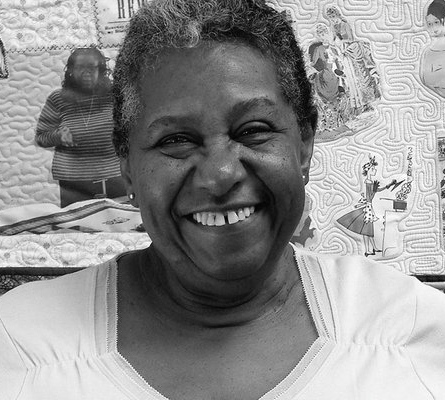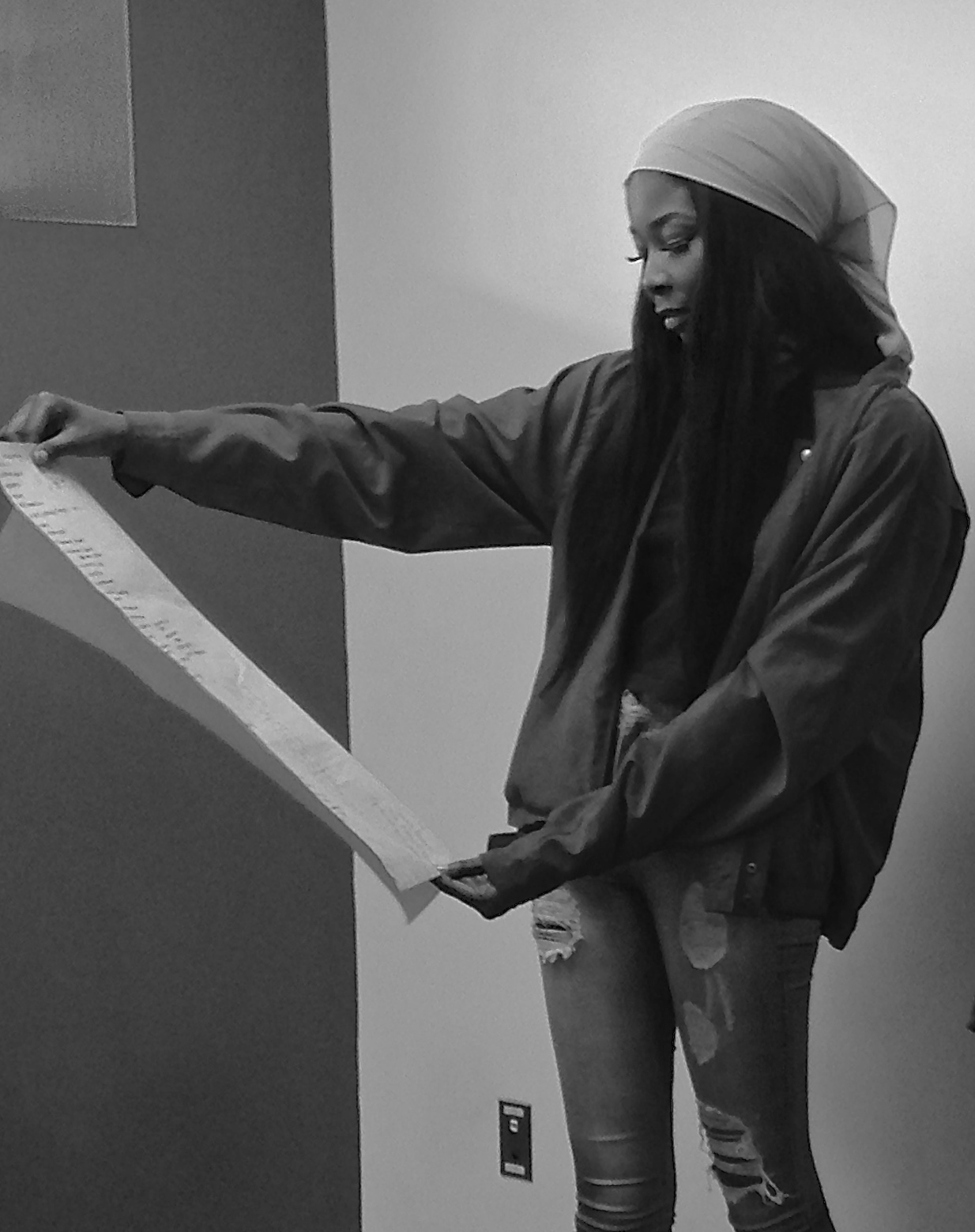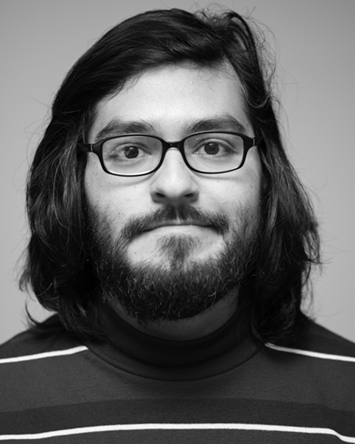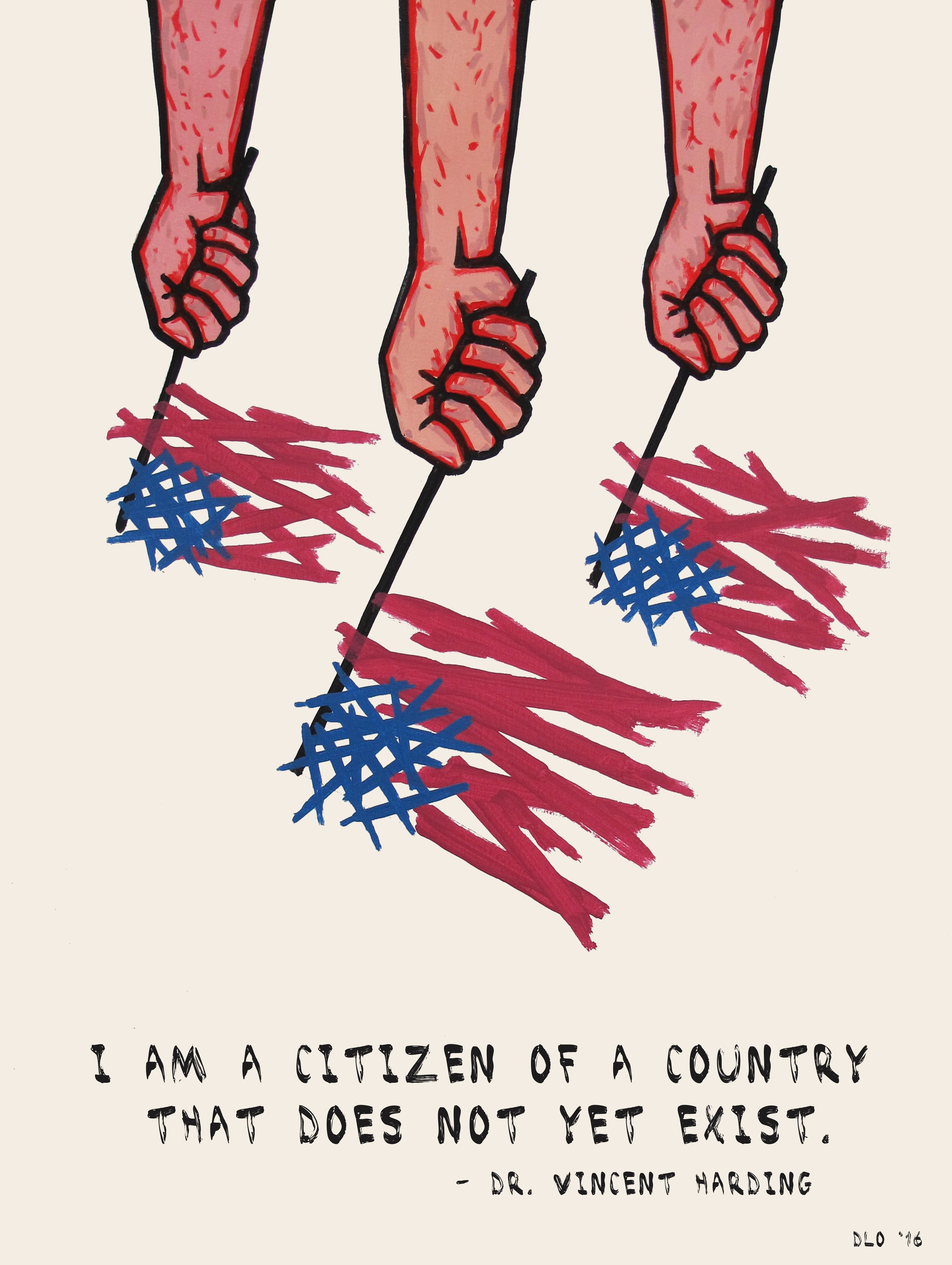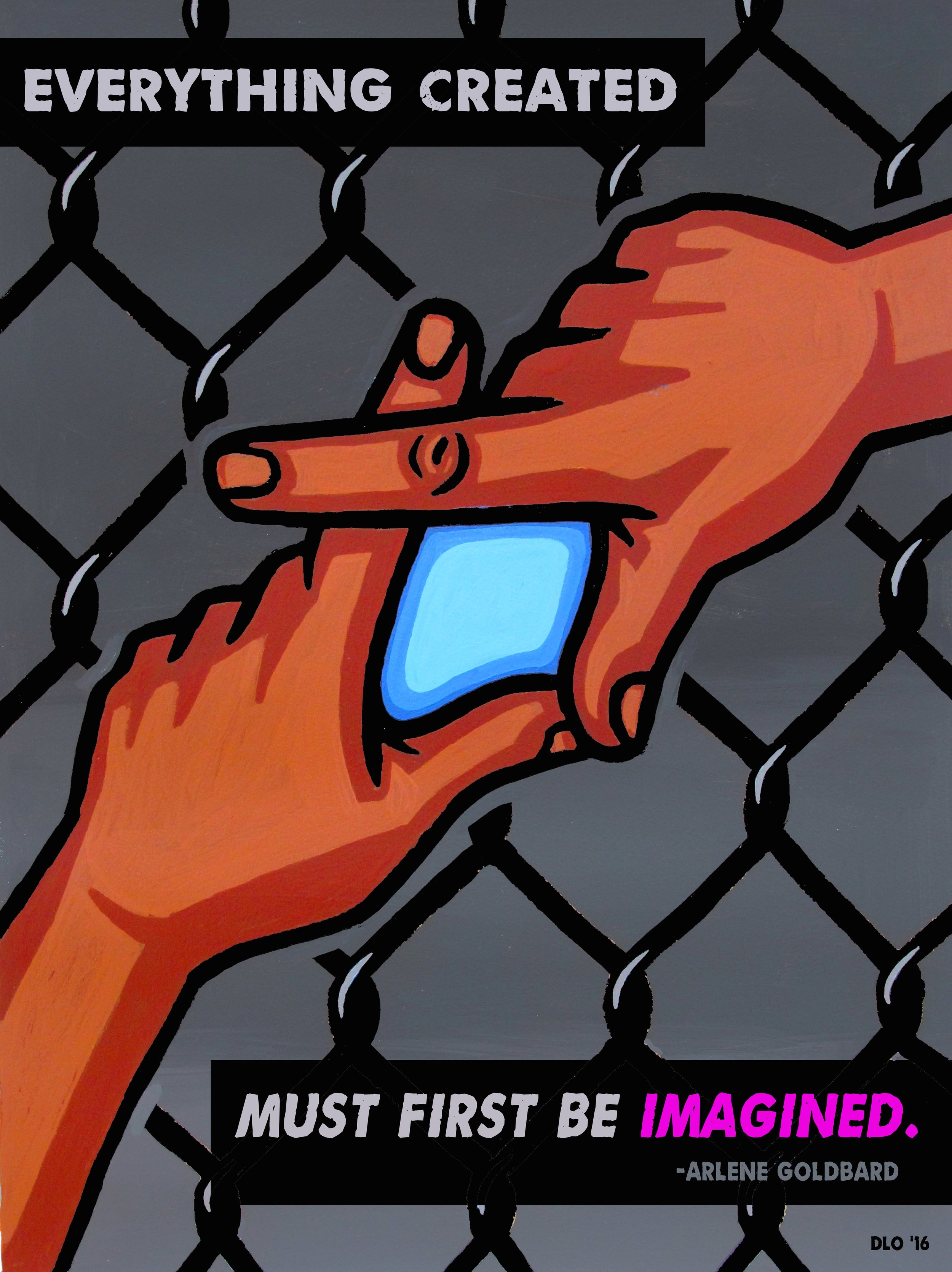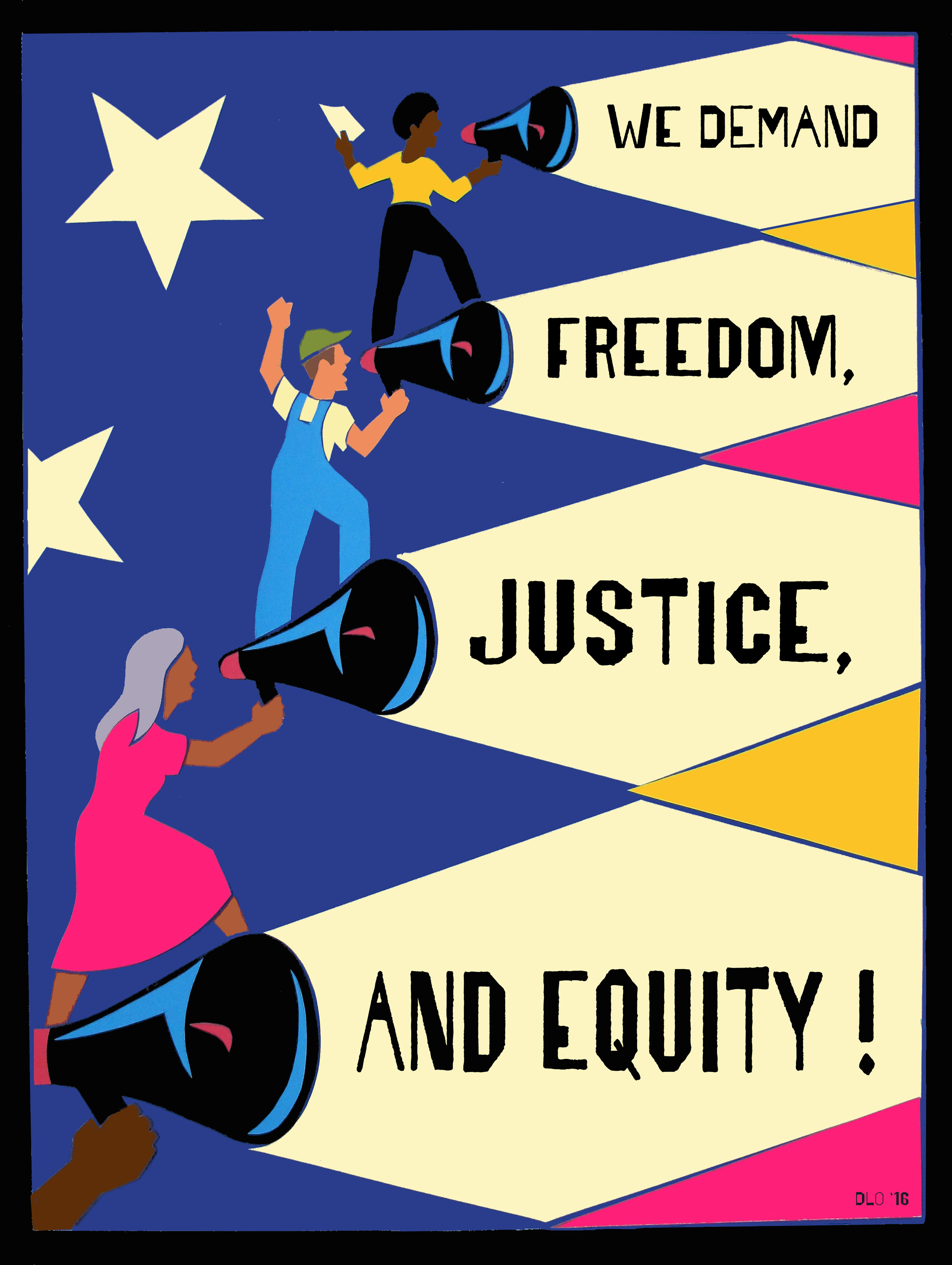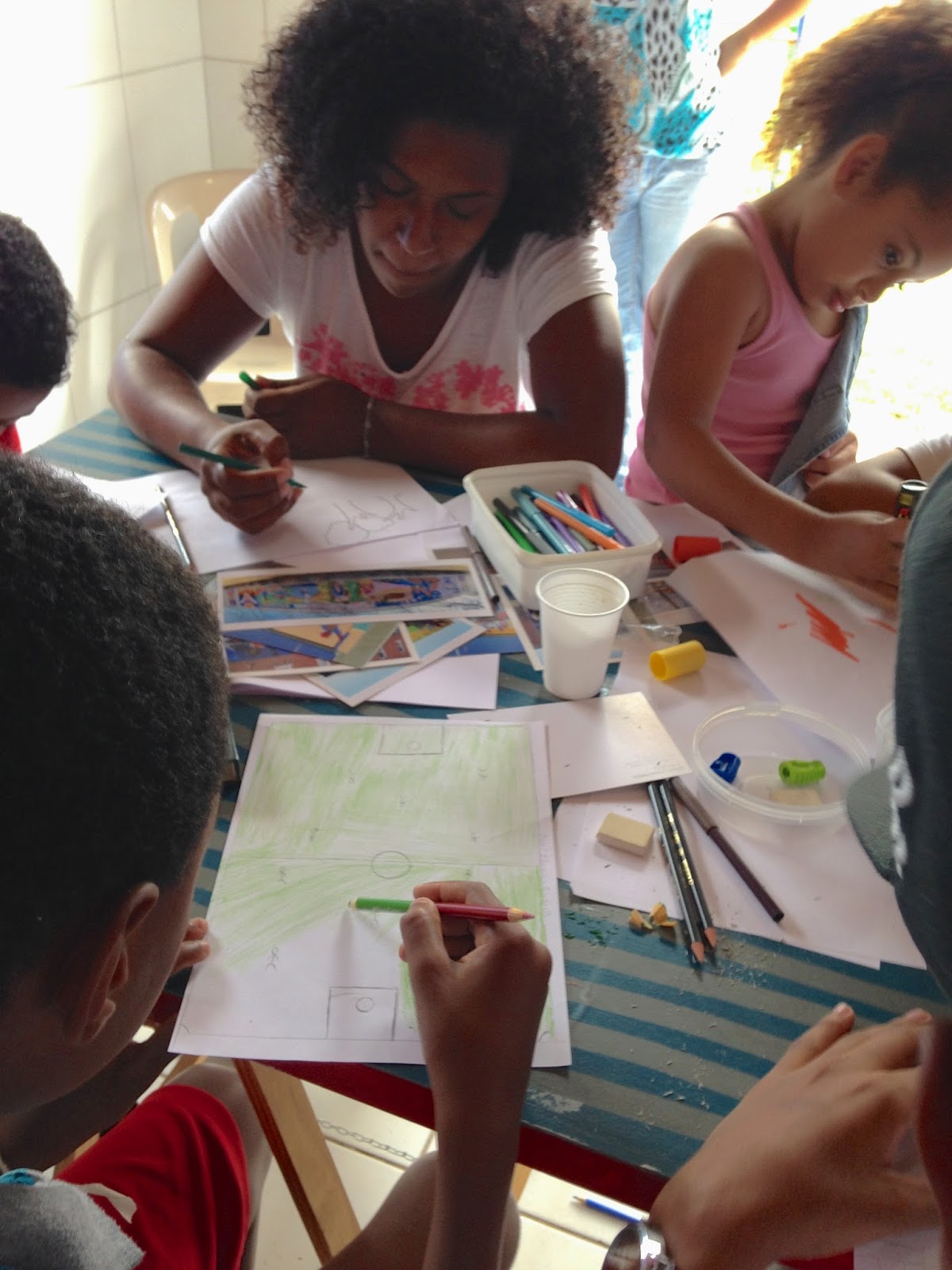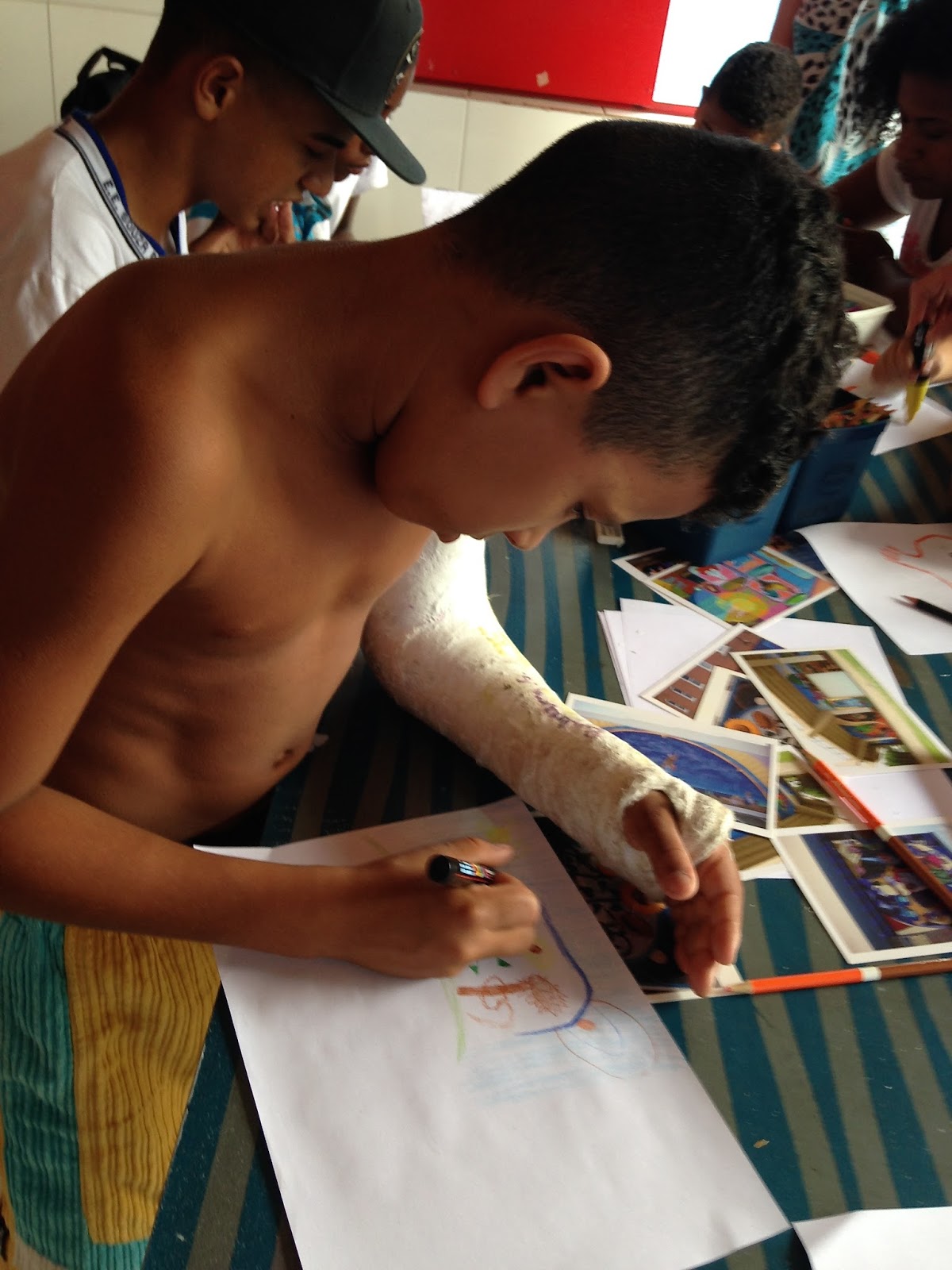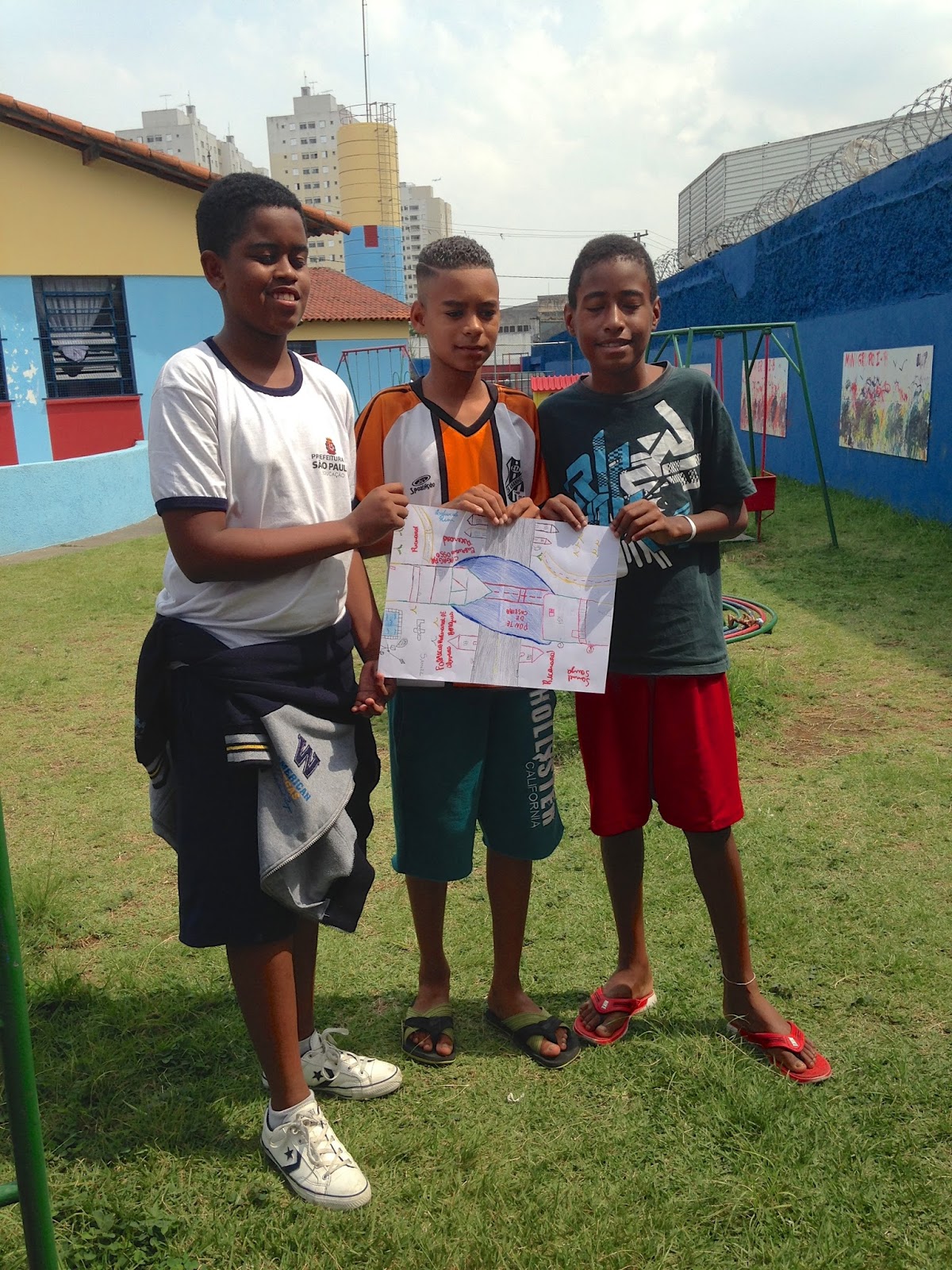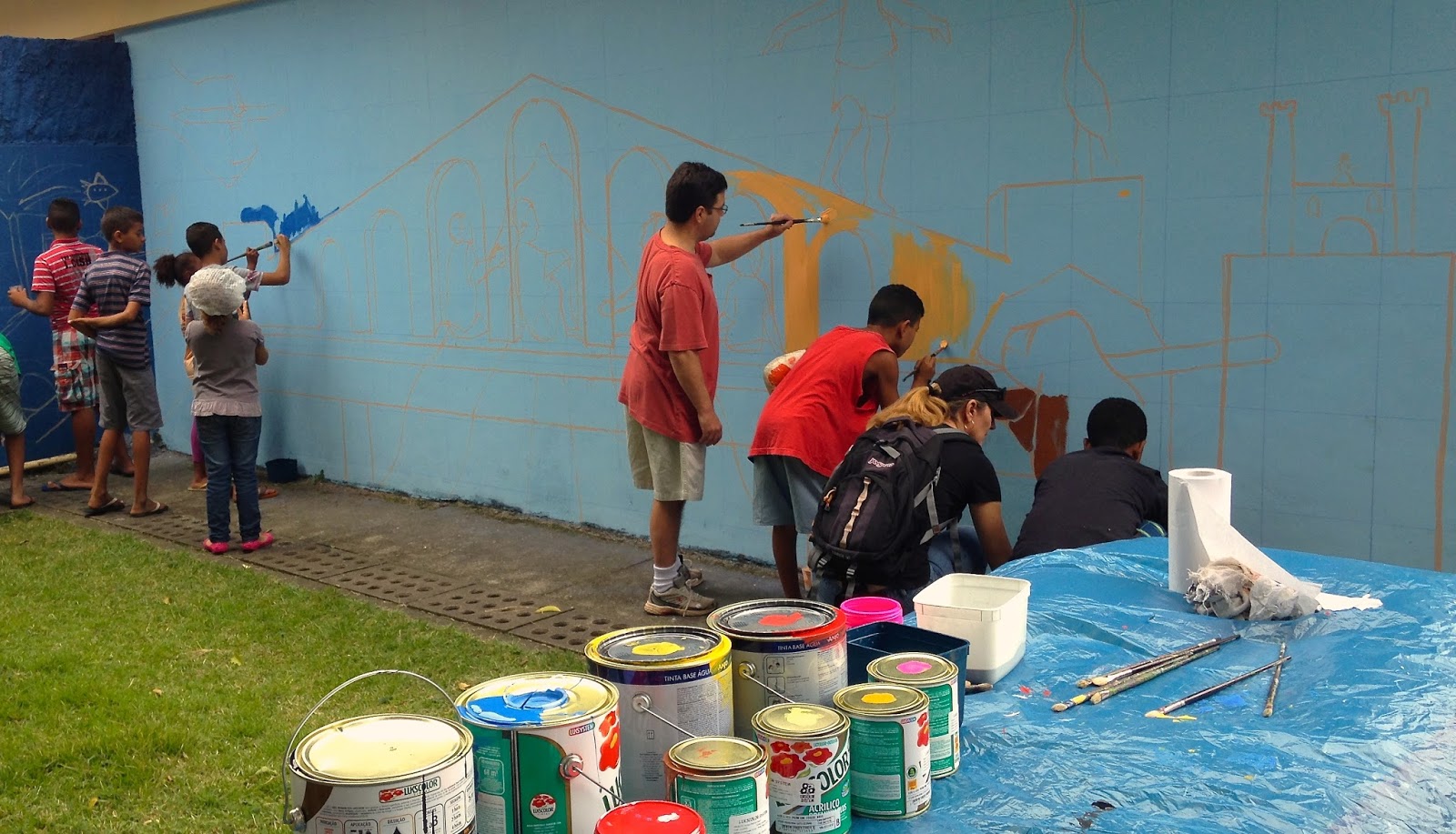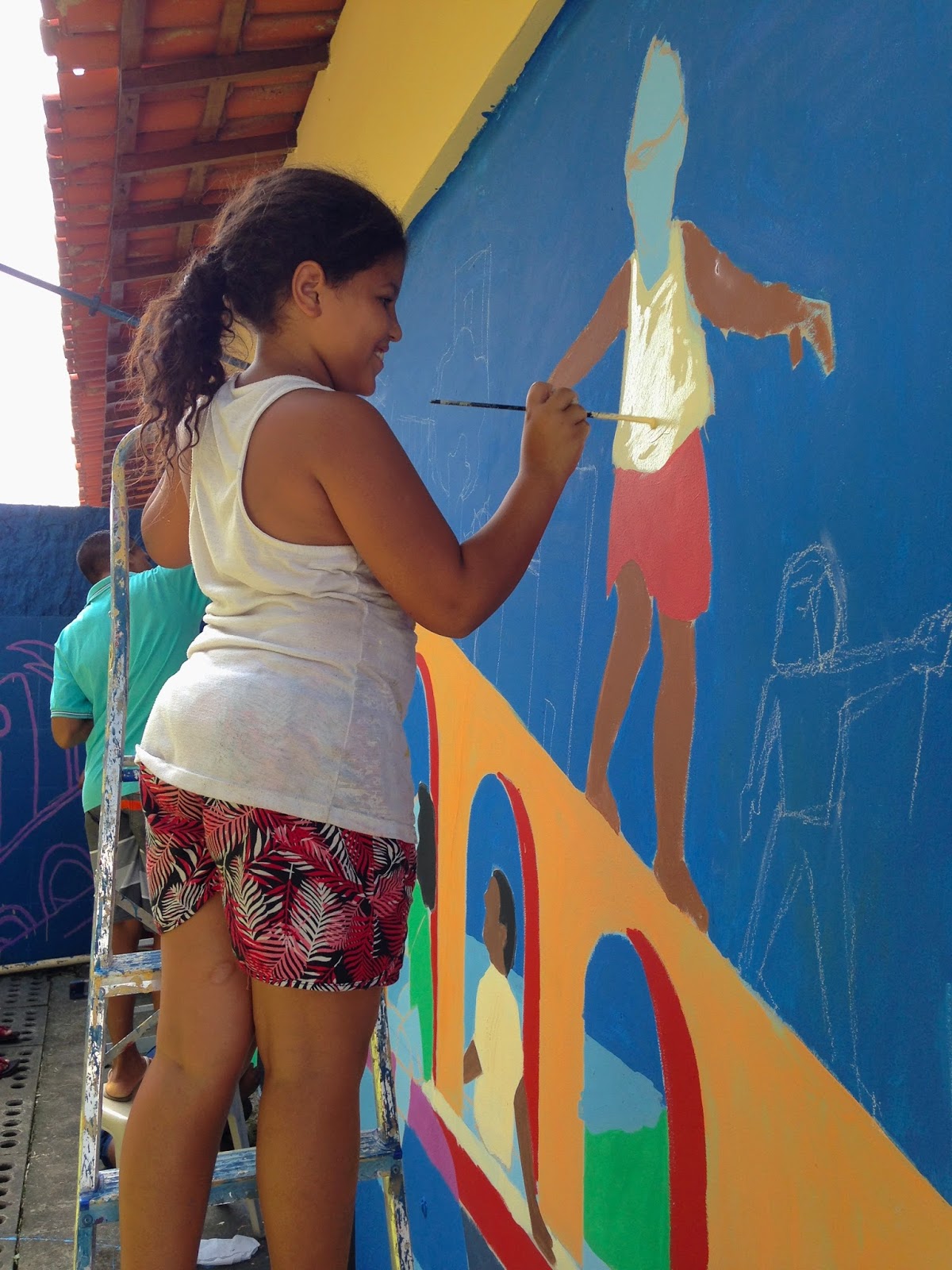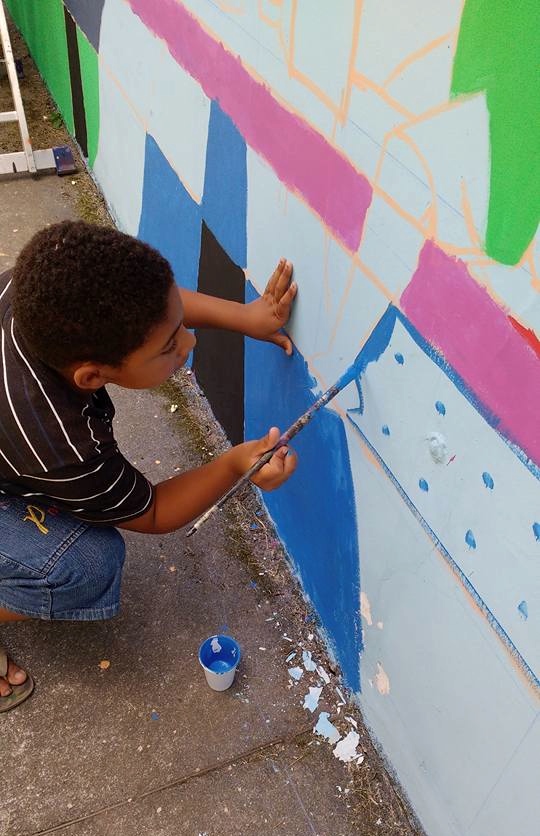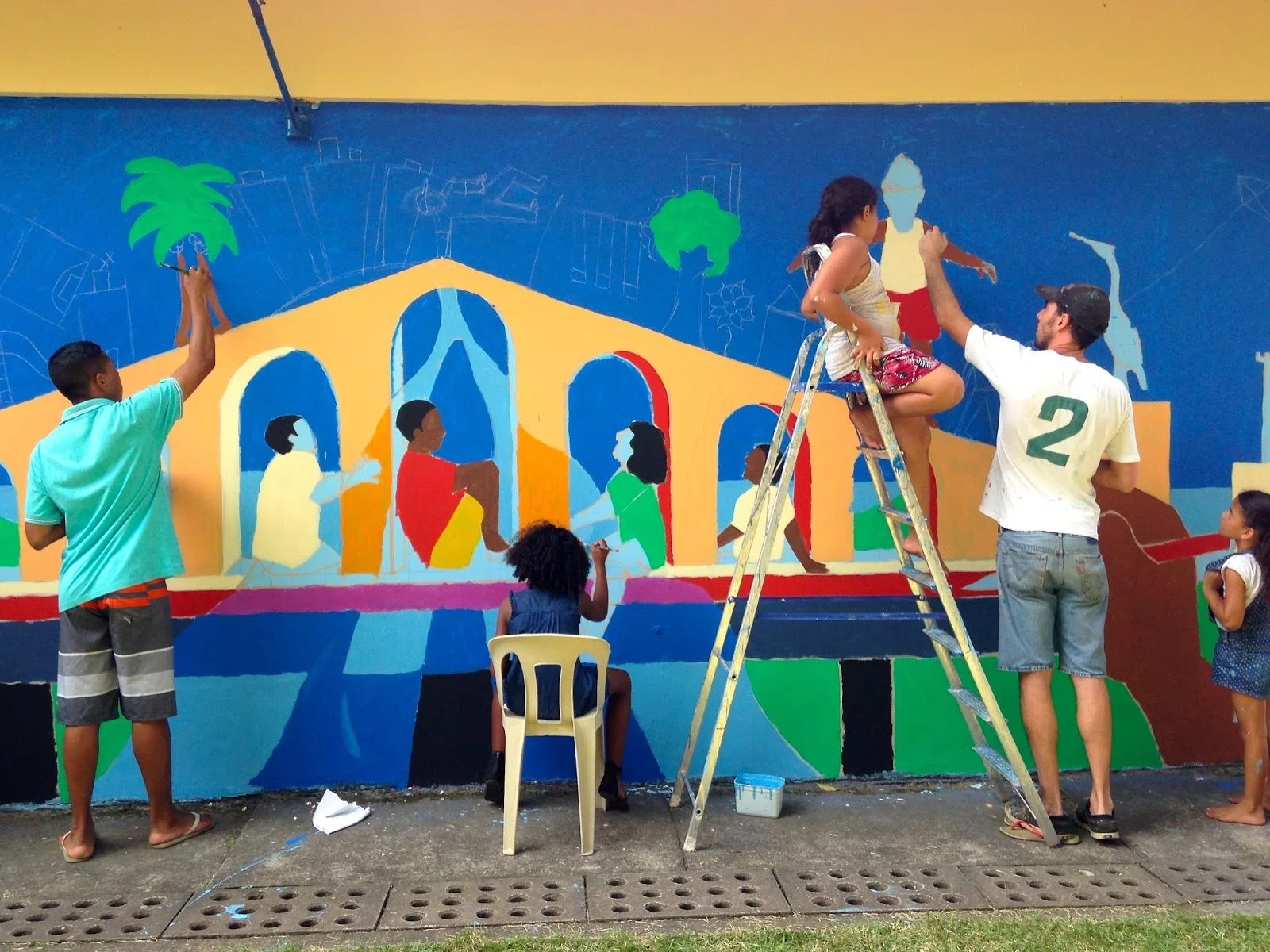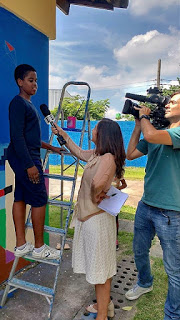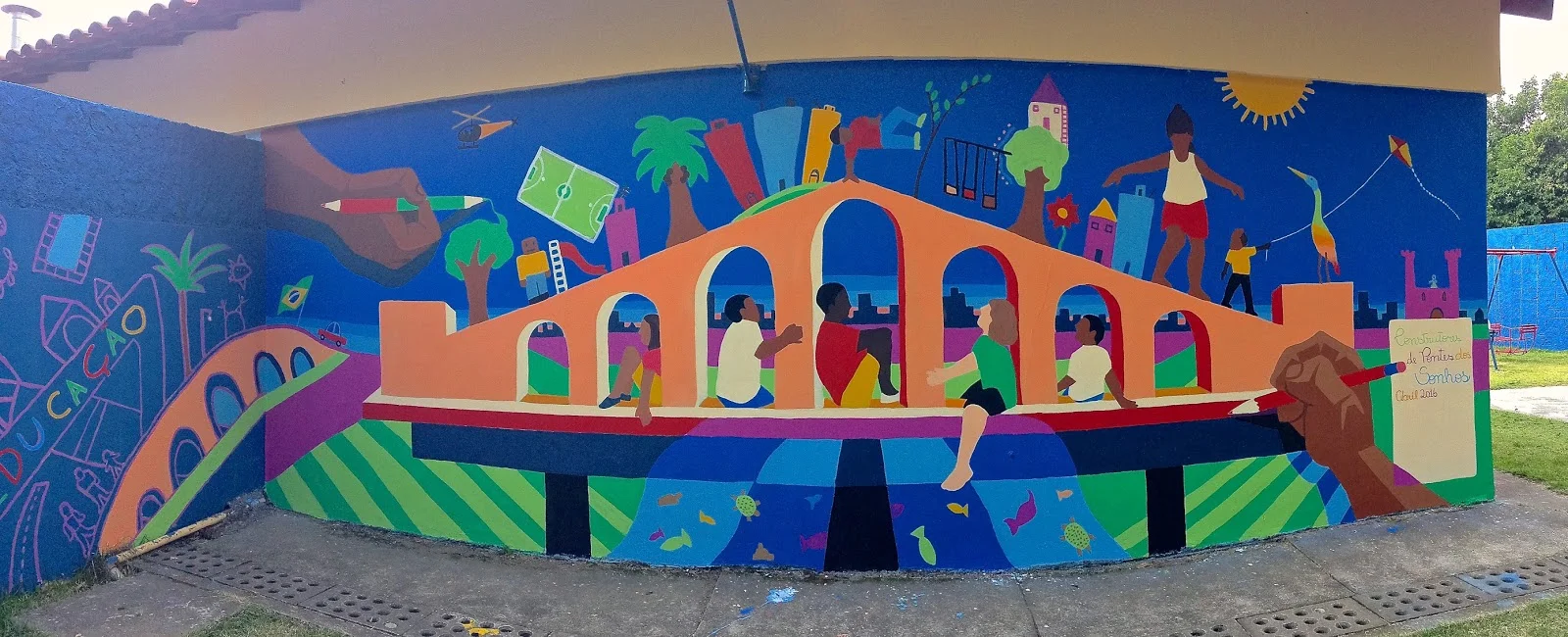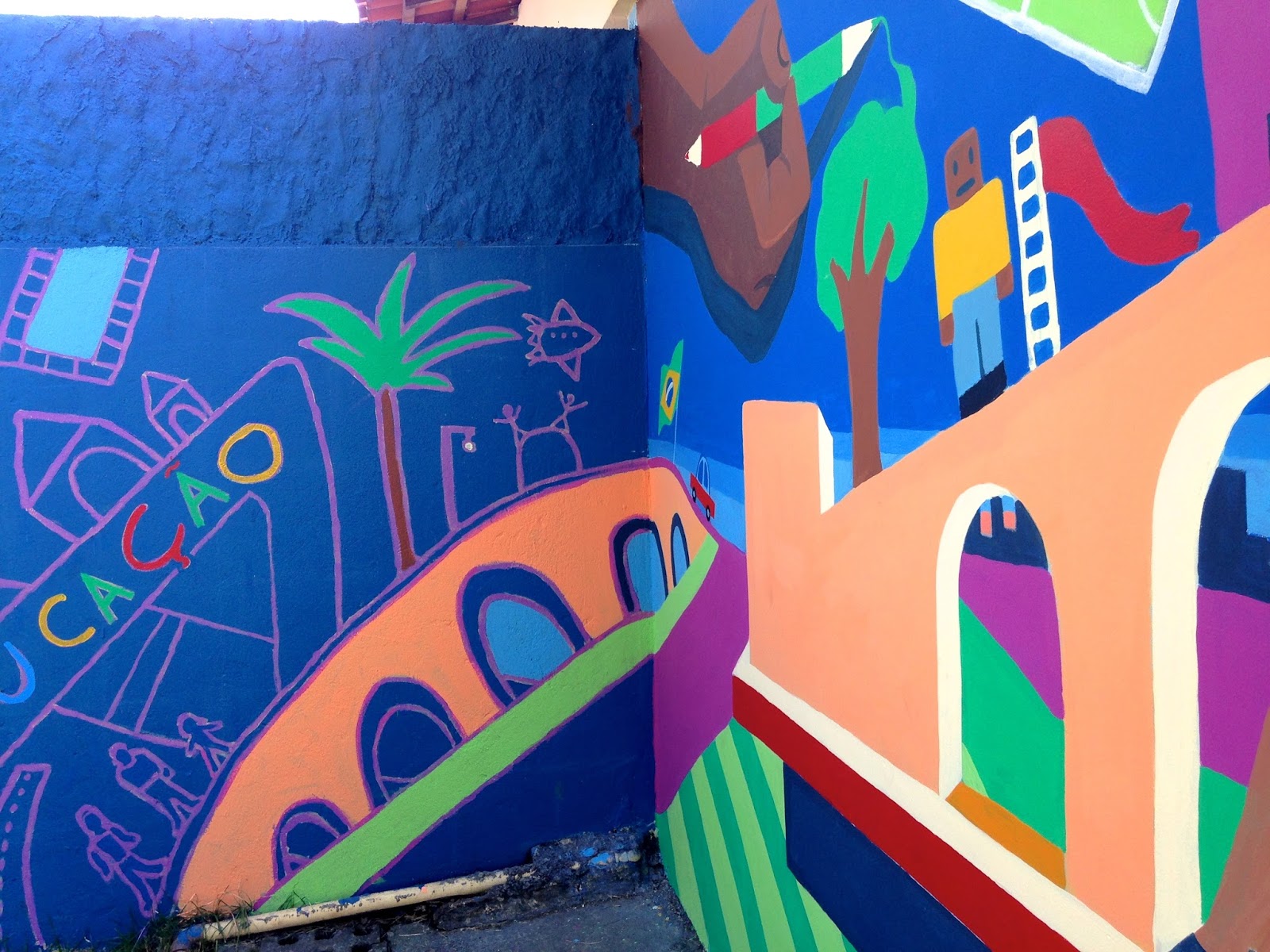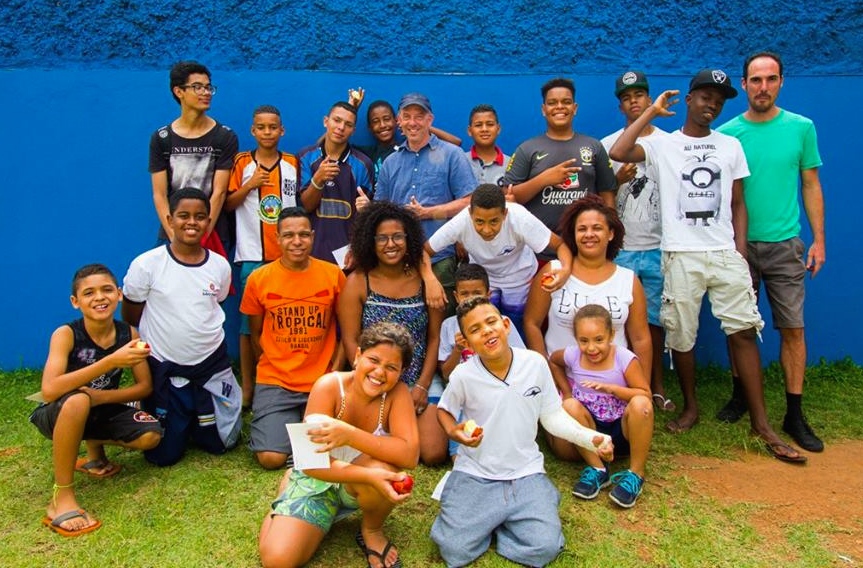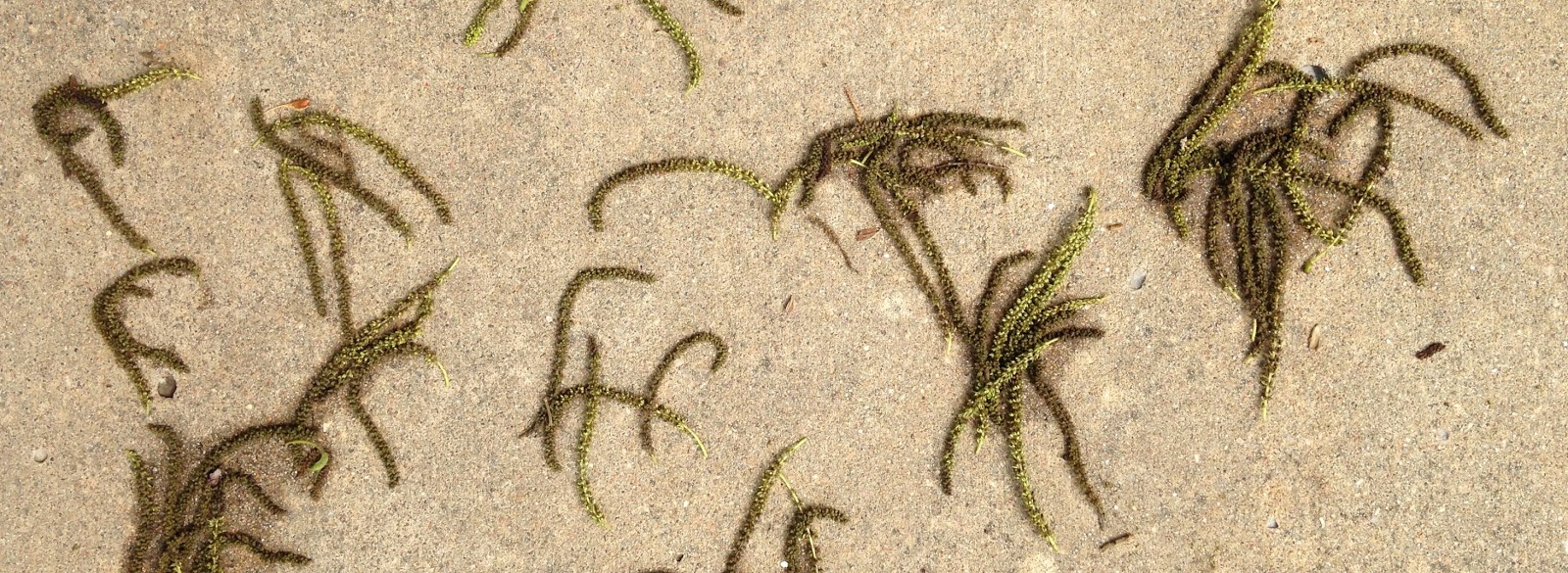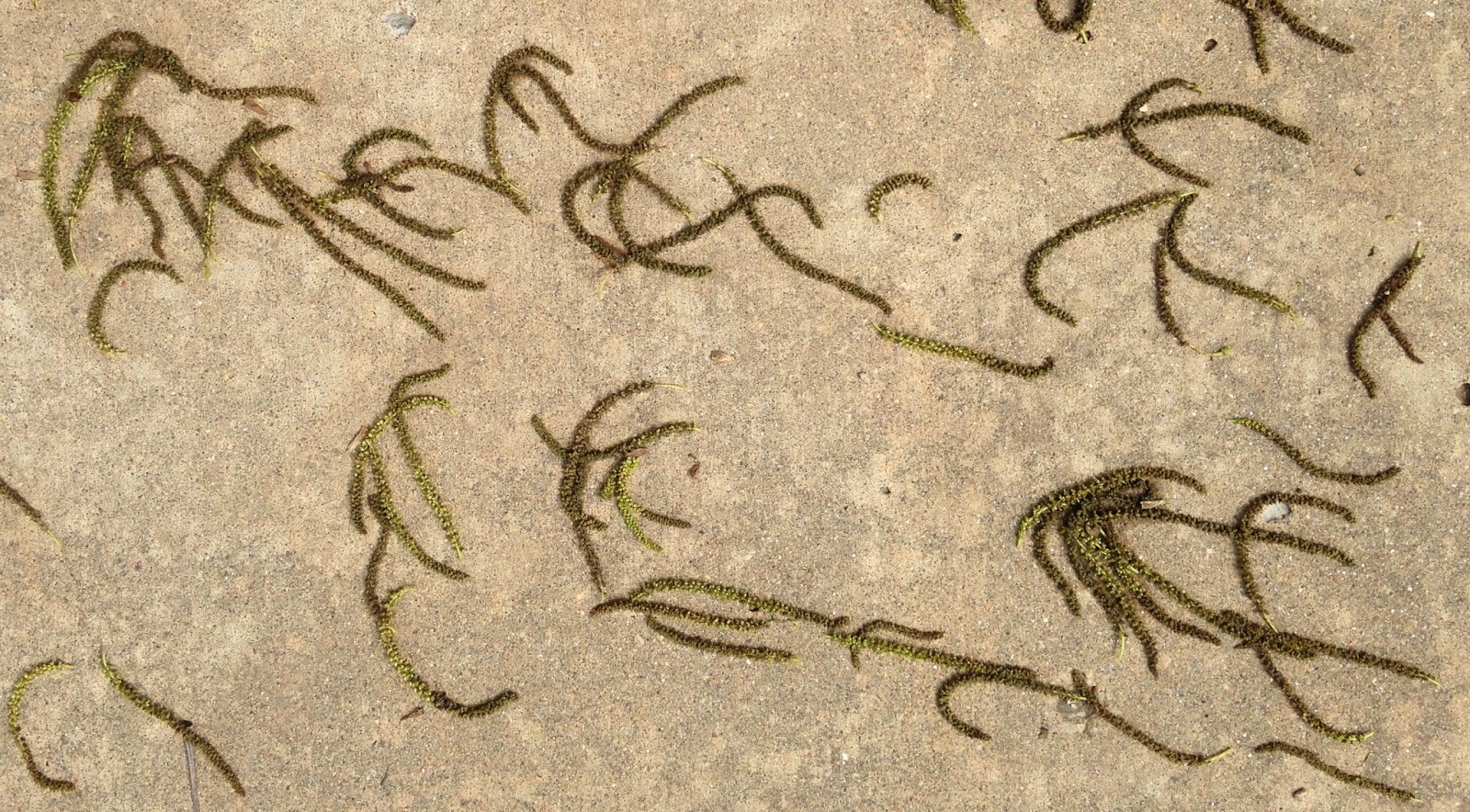North American marsupials are organizing. Join them in the streets on May 1st ! Get your own free download of this poster at Justseeds.
Designing a New Habitat for the Pollinators
It’s getting lighter. Daylight savings time is back. Mural season. Flowers awaiting pollination are beginning to bloom, daffodils and dandelions first. Bees are appearing and monarchs have begun their migration north from Mexico. There’s front-page news in the Journal-World that a fraternity of eighty-seven guys has moved into the 888 New Hampshire building (where our mural will be), while their palatial estate was being renovated. Closing in on the north side of the farmers market parking lot, construction continues on a yet another upscale apartment building shrinking evermore the neighborhood’s habitat for affordable housing.
In the studio a couple blocks away, we began imagining how the Pollinator artists would have responded to the destruction of the original mural, and how they would feel about changes to the neighborhood. Would they act to protect and defend natures’ pollinators against threats to their habitat? How would they respond to the new building on which they would be painted and what it signaled for the East side of Lawrence? Would other artists be compelled to join them in their struggle?
Our initial drawings illustrate a tension between competing ideas about how neighborhoods develop and change, and who or what affects that change. As we worked, we talked about the tools and strategies artists posses to address these issues - how music, poetry, film and painting can shift perceptions and inspire action.
As space for affordable housing shrinks near downtown, so does the habitat for nature's pollinators. Market driven monoculture has replaced many wild and organic backyards and greenspaces in Lawrence with chemically enhanced weed-free sod. Dandelions are the enemy, technology the solution as with these newly developed 'drone pollinators.'
This kind of erasure isn't new. Mural Assistant Nedra Bonds has seen it before. In the 1980's, the historic site of Quindaro, near Nedra's home in Kansas City, Kansas, was nearly turned into a trash dump. No one in power seemed to care that Quindaro had been established by Wyandots and Abolitionists to fight pro-slavery forces until Bonds and others started to make a fuss and tell the story through quilts. It is now on the National Register of Historic Places.
Nedra sharing her Quindaro quilt at our Design Team workshop
So what's the antidote to market driven monoculture? Wes Jackson at the Land Institute calls it perennial-polyculture, a practice of mimicking the prairies of central Kansas to produce crops that don't require the soil numbing toxins used in industrialized agriculture. We asked ourselves what a perrenial-polyculture of built structures and human community would look like in Lawrence. Our answer meant aligning the mural design with wind-blown seeds, weeds and migrating pollinators both human and winged who eschew monotone and monochrome for a full spectrum of experience.
Re-imagining the Pollinators
For many Lawrence folks, especially those that frequent Saturday farmers market, the Pollinators mural and its untimely demise are still fresh in their memories. News that the mural would have a second life was celebrated but also prompted many questions. Where would the new mural be located? Would it be the same size? Who would design and paint it? And most crucially, would the design be the same, including the seven African-American artists and the Gwendolyn Brooks quote, “We are each other’s harvest; we are each other’s business; we are each other’s magnitude and bond”?
Answering the first three questions was easy. The new mural would be at the same relative location (the north facing wall adjacent to farmers market), although only about half as large. The muralists, as I mentioned in our previous blog post, would be comprised of both new and old design team members plus a new assistant and two new apprentices. Much more difficult to answer is the last question - how would the design be different from the original, what would remain, what would be changed, and what would be added?
Since early February, our design team has been grappling with these questions. Early on we chose to not merely reproduce the original Pollinators, but to re-imagine it. We committed to honoring the original while adding elements that speak to a new time and new circumstances.
There are a few precedents for re-imagining a mural. The iconic “Wall of Respect” in Chicago, which evolved over the years with some images being replaced with others as needed, is probably the best known.
The "Wall of Respect" in Chicago, Illinois.
The idea that a mural does not necessarily have to be static or ever really finished, that it can be a living expression that grows and changes with the times has been a compelling notion for our design team. Because visual art is bought and sold as a commodity, there is less opportunity to change something after it's left the studio, while re-imagining artworks in other media like dance and theater is much more familiar. It’s not uncommon to see reinterpretations or updated versions of well-known stories from the likes of Shakespeare or August Wilson set in new contexts with casts that reflect different points of view. We have that opportunity because the Pollinators is being recreated and we can make changes if we wish. It would be a much different story for folks at the Spencer Museum and City, I imagine, if the original mural was still there and we proposed to change and adapt it.
To ground our re-imagining, we began at the Lawrence Public Library with research about the original Pollinators, it’s subject matter and design, and how the community came together to ensure it would rise again.
The team felt strongly that this story of why the mural was destroyed and the community effort to restore it needed to be depicted in some form. The fate of the Pollinators is connected to the larger story about how downtown Lawrence is changing and who will benefit from those changes. Re-examining the central metaphor from the original mural, we began thinking about the factors, agents, etc. that inhibit or block pollination in nature. This led us to question what factors might inhibit the ability of the artists depicted (and their descendants) to ‘pollinate’, and how analogous forces could prevent cultural cross-pollination in the larger community. Big questions.
So, instead of separating our discussion about the biology of pollination from the African-American artist pollinators in the mural and the cultural impact of new development, we let these ideas overlap, complicate and influence each other. We talked about monoculture in agriculture and how to spot signs of monoculture within the cultural community of Lawrence. We talked about the shape and structure of pollen grains, the persistence, beauty and utility of 'weeds', contemporary African-American artists with roots in Kansas, and we talked about how upscale development is encroaching on the East side with uncertain consequences. Our research and conversations produced a wealth of ideas.
In this way, the re-imagined Pollinators project has become a forum for creatively addressing important issues including affordable housing, food justice, and people’s history. This is intentional. Inspired by the examples of artists Liz Lerman, Augusto Boal and Judy Baca, our approach is founded on the idea that a collaborative creative process can illuminate and articulate community conflicts and aspirations in ways that can lead to equitable and just solutions.
Next, we begin to visualize the mural design…
Fate of the NEA and NEH
For the first time since they were created in 1965, a president has proposed eliminating the National Endowment for the Arts and National Endowment for the Humanities. #SaveTheNEA, #SaveTheNEH
International Women's Strike
In solidarity with the International Women's Strike, here are portraits of two incredible women. CJ Brune, who passed in 2015, was one of the original February Sisters and a lifelong activist who I was lucky to know as a friend and mentor. My mom Pamela, still alive and kicking, is pictured on her soap box fighting, as she has her whole life, for women's rights and social justice.
Mom and "CJ" together in 2016
Seeds of the new Pollinators mural
On September 20, 2007 the Pollinators mural was dedicated at Lawrence Farmers Market. On March 6, 2015 it was destroyed. And this week, two years after it came down, and spurred by a remarkable community effort to ensure it would return, we celebrate the germination of the Re-Imagined Pollinators!
This is new territory for me. I have restored old murals, “Seeds” at 9th & Mississippi and “1000 Miles Away” at Cordley Elementary to name a couple. I’ve also lost a few to time and changing priorities, but I’ve never reimagined a mural. Diego Rivera famously recreated his “Man at the Crossroads” at Palacio de Bellas Artes in Mexico City after J.D. Rockefeller Jr. tore down the original in New York. The dispute with the monopolist oil magnate centered around a portrait of the Russian leader Lenin which Rivera made sure to include in the recreated version.
The tension between an artist’s politics, a patron’s power and the persistence to tell one’s story in full are all part of what make the process of creating public art so dynamic and democratic. And this story of destruction and resurrection is something that our new design team is keeping in mind as we explore out how to tell the next chapter of the Pollinators.
I am supported on this project by the incredible mural team of: Nedra Bonds, a nationally recognized quilter who’s work is currently on view at the EthnicArt Gallery in Kansas City; Janada Birdling, a Lawrence High School senior who has worked on murals at the Ballard center and at the Full Circle Youth Program; and Eugene Sarmiento, a first year printmaking grad student who has worked alongside the Sour Grapes graffiti crew in Dallas and is currently an intern at the Spencer Museum.
We are joined by an equally committed and creative team of volunteers from the community who are integral to our being able to see the potential of our project from many points of view. They include local artists, folks from Farmers Market and the Spencer Museum, in addition to passionate residents who want to help shape the community they live in. I am grateful for their work and willingness to give their time to this project. And this project would not be possible without the leadership of the Spencer Museum of Art and especially Curator of European and American Art, Susan Earle. You can keep up to date with the Re-Imagined Pollinators on our facebook page, and all are welcome to stop by our workshops to see the process as it unfolds.
After veto Brownback pleads, "Please stop me!"
Like a low budget movie monster, the governor is unable to stop himself from wreaking more havoc upon the state, and so he cries out in anguish "Please stop me!"
Trigger Warning
It is imperative that we stop this slide into violent ideology, now. Students, faculty and staff from KU and across the state have made their voices loud and clear on this issue – They DO NOT want concealed carry on campus. It's time we support them. Please join others in condemning and stopping this dangerous and irresponsible legislation before it’s too late.
Frederick Douglass Community Center
Last year I got to work with folks in Toledo, Ohio on a small mural for the Frederick Douglass Community Center. We chose to include his quote, "It is easier to build strong children than to repair broken men." In light of recent events, these words have an added meaning for me today. The broken men are the president and his gang of ignorant scoundrels.
Don't Adapt to Absurdity
I am proud to be joining artists from across the U.S. in "Inaugurating Resistance," a new visual art campaign coordinated by Justseeds and the Interference Archive. Our work supports peoples movements in response to the rising tide of xenophobia, racism, and misogyny in the U.S. You can browse and download images from the growing collection, and you can submit your own here. Below are the four pieces I have contributed so far.
I am a citizen of a country that does not yet exist.
Dr. Vincent Harding, 1931-2014, was a visionary historian, theologian and social justice activist. In July 2012 on his 81st birthday Dr. Harding spoke at the National and Racial Healing Town Hall at a Children’s Defense Fund’s conference. “I am, you are, a citizen of a country that does not yet exist, and that badly needs to exist. And I want to offer you the opportunity to celebrate my birthday with me by pledging deep in you that you are not going to give up this life without offering yourself totally to the creation of this country that does not yet exist.”
Borrowing the refrain from Langston Hughes's poem Let America Be America Again, he said: “We can always stop there and complain and complain and complain. ‘You’ve never been America to me.’ But remember, Langston did not stop there. ‘America, you’ve never been America to me. But I swear this oath—you will be!’ I want you, those who are not afraid to swear oaths, to swear that oath for yourself, for your children, and for your old uncle here. You will be, America. You will be what you could be. You will be what you should be, and I am going to give my life to the working for that.”
(From a 2014 article by Marian Wright Edelman, President of the Children’s Defense Fund)
On the road to Culture/Shift
November 16th. Nicholas and I were on a road-trip.
But it didn’t feel like November. A warm wind from the south. Nearly eighty degrees.
And it didn’t feel like we were on the precipice. No cliffs in sight. No curfew. No national guard on the streets. Just blue skies. Light traffic. And endless billboards along I-70 for Loose Slots, Ozarkland and Nostalgia Ville, USA.
Like the recent SNL sketch that encouraged aggrieved and disillusioned hipsters to escape the new reality by living inside a literal bubble hovering over Brooklyn, for a moment we could motor on under the delusion that Trump and his gang were just a bad dream.
It didn’t last long. Culture shifts.
In a field along the interstate near Kingdom City was a sight that brought the nightmare back to life. A monster truck with knobby wheels the size of kiddie pools was installed on a ramp as if it were about to take off into the sky. Emblazoned with billowing U.S. flags like a tank in a military parade, it’s meaning was not made unclear. A banner above the truck cab screamed triumphantly TRUMP! The banner was a claim to territory both physical and psychic. And it felt like a threat.
As it was in 1893, when land grabbers staked claims to the home of the Cherokee in what we now call Oklahoma. As it is in working-class neighborhoods across the U.S., where greedy developers force out long-term residents to make space for the “creative class.” And as it is at Standing Rock where multi-national corporations gamble with the well being of an entire ecosystem, while trampling on the treaties and human rights of a sovereign nation.
A phone call from the Lawrence Director of Arts and Culture brought a moment of levity. It seemed that someone had made a politically charged alteration to a community mural I led in 2006. A protest sign held by a Civil Rights Marcher in the mural was repainted to say, “Stop Trump.” “Did I believe this was a criminal act,” they asked. No, I’m pretty sure it wasn’t, I replied… No one claimed responsibility. Many commenters were outraged and called the change terrorism, while many others cheered.
All this made the purpose and destination of our road trip that much more meaningful. We were headed to St. Louis for the first national gathering of the U.S. Department of Arts and Culture, aptly titled Culture/Shift. It promised to be a memorable weekend, but the outcome of election made it feel like emergency preparedness training – good to know then that one of the Lawrence Field Office folks, Kate, is actually on our local Emergency Management team. In addition to Kate the blacksmith and Nicholas the filmmaker, the Lawrence/Kansas City contingent included Sara the scientific illustrator, Margarita the poet, Amber the painter/musician, and Nedra the story quilter. Thanks to support from the USDAC home office we were all able to afford the trip.
Culture/Shift was held at the Regional Arts Commission (props to Cultural Agent Roseann Weiss and the incredible coordinating team there) which for a few days became a home to the most dynamic and inspiring group of artist/activist/policymakers I’ve ever had the privilege of hanging out with. And although the weather outside caught up with the season, inside the spirit was warm and full of radical hopefulness.
Setting the tone for the gathering, Chief Policy Wonk, Arlene Goldbard challenged us to stand up to equivocating media pundits and armchair apologists who have suggested that we “Give him a chance” or “Wait and see.”
“Don’t adapt to absurdity,” Arlene said quoting Van Jones. We didn’t need more proof of Trump’s xenophobia, racism, sexism or ignorance to verify the danger. It was time to imagine and then build the resistance.
More on Culture/Shift here.
Together
Construtores de Pontes dos Sonhos—Builders of Dream Bridges
Água Branca. It sounds like a New Mexico spa or a white water rafting outfitter along the Colorado River, but here in São Paulo it’s a comunidade hidden behind a trucking company and packed in between the Marginal Highway and the polluted Rio Teite. It’s a community of 3,000 people you wouldn’t run into unless you were looking for it. And, it was the site of my final project in Brazil this spring. I was invited by Parede Viva and the Revivarte project to add to the series of murals they had been making with local residents. On my first day, I was escorted in a U.S. Consulate SUV across a tiny portion of this city of nearly 20 million. The graffiti artist, and my counterpart/interpreter, Kaleb met me there.
After brief introductions, a group of us, Fel, Kaleb, Joyce from the Consulate and Ana who runs a neighborhood salon, took a walk around. As we wove our way down narrow alleys and in between buildings in different states of construction, Ana told us about neighborhood struggles (gentrification, drugs, poverty) and triumphs (Revivarte, a new playground, improved housing). All around us there was wildly inventive painting on walls, vehicles, trashcans and light poles.
We walked along the edge of the comunidade, bordered by a narrow creek lined with banana trees and shacks perched perilously over the water. At one end there was a small bridge (ponte) over the creek. It led to the heavily gated backside of a big box store like Home Depot, but clearly wasn’t accessible to Água Branca folks.
The site for our mural was at the main intersection entering the comunidade on the brightly colored walls of their pre-school. Just inside, giant angry paper mache mosquitos hung from the rafters. They were warnings about Dengue, much more prevalent there than Zika. Next door was a scrap yard where catadores brought their carts (carocas) full of gleaned metal, plastic and wood to sell for a few reales. Parede Viva artist Mundano has been leading a project called “Pimp my Caroca” that supports these and other São Paulo catadores by painting their carts and helping to share their stories.
Pontes (bridges)
The next day Kaleb picked me up. Negotiating morning traffic, he thought out loud saying that we (artists) act as a kind of bridge when we come to work with comunidades like Água Branca. I wondered, if we bridges flow in both directions or just one. And what do we span? From where to what? Is there a toll? And what’s underneath?
In a small casita at the back of the school we gathered for the first time. Our team was made up from local kids who joined us after school (they only go half-days), Kaleb, plus two teachers Ana Carla and Ana Karla. There was a good mix of girls and boys and a range of ages from about 7 to 17. We went around and introduced ourselves (with Kaleb’s animated translation) and said our favorite color. I wrote them down and asked which of these colors should we use in the mural? “All of them!” they demanded. I agreed.
I had planned on showing some images of my murals but we couldn’t get the projector to work, so instead I asked the team about that tiny bridge down the street. What does it connect to? Who uses it? What goes under? They wanted to show me, so we walked over, and immediately the kids started playing on under and atop the bridge. One pirouetted along its spine like a gymnast, others nestled inside its rounded openings becoming new pillars holding it up. We looked at the creek in both directions, first towards the comunidade (relatively clean and healthy) and then the opposite direction past the scrap yard toward the highway (trashed). I asked if there were animals or fish. “Sim, sim” even turtles they say. And looking up we saw in the distance a lone white egret perched motionless in the water awaiting a meal.
It was just a brief adventure, but it completely changed the vibe. By shifting our perspective, by asking a few basic questions, questions that because they were asked implied that they were worth answering, we started to see that bridge in a new way - from overlooked and common to a unique and identifying characteristic of the comunidade. Bridges (or the lack of them) both literal and symbolic were ever present. There are many essential places you simply cannot get to without a car. And the bridge out of poverty is still more of a dream than reality for many in Água Branca.
For a few years now, a quote from James Baldwin’s essay “The Creative Process,” has followed me around. “The purpose of art is to lay bare the questions that have been hidden by the answers.” And it occurred to me again here in Água Branca, if the bridge was an answer, what were the questions?
Back in our casita studio I proposed, if you could build a bridge, what would it connect? Who would it be for? What would it look like? They charged ahead, drawing in teams of two, first pencil and then color. We took a break for almoco (lunch) of little empanadas and soda. After, we presented our bridge (ponte) designs to each other.
(In the news, a vote was imminent in the House on whether they would proceed with an impeachment trial of the President. My new friends were wary. They feared that many people did not understand the implications and motivations behind this push. Like in Kansas where so many vote against their own self-interest out of fear and ideological pressure.)
These short projects mean that we only have a day or so of drawing before a design needs to be composed – that was my homework for when I got back to the hotel.
Our mural design is of a vision in the making. We see the hands of artists creating it. In the center, the Água Branca bridge is reinforced by the kids who sit within it, while their aspirations occupy the space above. Flowing underneath is a mixed message – the creek is populated by turtles, fish and…trash. The adjoining wall is a blueprint for the future, composed of all of their bridges interconnected, allowing everyone access across the city.
The next day we made quick work of squaring –up the design with a chalk snapline (the simple builder’s tool was a revelation to many). And then it was time to paint, but we had to wait… for the Consul General, Ricardo Zuniga. Following protocol, he would be the first to paint. We had met earlier in the week when I was invited to join his family at a new exhibition of Tim Burton drawings. At the show, me and the Consul General, who had a major hand in opening relations with Cuba recently, discussed our favorite Burton films and agreed Edward Scissorhands and Beetlejuice were the best, while the recent remakes of Alice in Wonderland and Charlie and the Chocolate Factory were overblown disappointments.
Painting went quickly. The early fall weather cooperated, storming dramatically at night. People on the street parked their chairs on the sidewalk to watch the progress. My Portuguese was still terrible, but I knew the important colors – vermelho, laranja, azul and a few directional words like up, down, more and less. The rest was communicated by example and culturally appropriate hand gestures (I learned they weren’t all the same as in the U.S.)
The day before we finished, the media giant Globo TV (the same Globo that had been fanning the flames of impeachment) came to do a feature about our project. We were prepared. We had talked about how to share our story. It aired the next day. We watched and cheered when the deep voiced news anchor intoned Água Branca with a gravitas rarely heard, and then, just like that, it was time to say goodbye.
"Construtores de Pontes dos Sonhos - Builders of Dream Bridges"
We finished the last details, and then I quickly washed the brushes before our dedication ceremony. To each of the painters, I handed one and said, “This is a symbol of our work, but it still has life in it. You can choose to use it by yourself and do a little, or you can work with your friends and do a lot.”
After cake and sodas and many cheers of Parabens!, we jumped into a VW van and headed to the movies to see Superman vs. Batman. It was dubbed in Portuguese - probably all the better for me. During the movie, the design team was rambunctious and excited, waving their paint brushes in the air at the climax of each battle between superheroes.
Coda
A few weeks after getting back to Kansas, I received a fantastic surprise in my email. The crew from Água Branca, along with Kaleb, had muralized the bridge - a small but significant gesture, completing an idea and reinforcing the notion that art is not disconnected from life.
(And since my return, President Rousseff has been relieved of her position while the congress proceeds with an impeachment trial. The interim president, Temer, quickly reformed his cabinet to include only white men and shut down the Ministry of Culture, which was only reinstated after massive protests.)
I am grateful to all of the folks from Água Branca who welcomed me and gave their time for our project. Also, muito obrigado to the Meridian International Center, the U.S. Consulate in São Paulo, Parede Viva, Revivarte, filmmaker Adriano Choque and my friend Kaleb.
A lost language
This morning I found these messages written on the sidewalk in front of my apartment. They come from the pecan tree nearby. What do they say? Are they in a lost language?
Hidden Forces: The Kansas People's History Project
Emporia Mural Project
“No tengo miedo del mañana, porque he visto el ayer y amo el hoy.”
This Spanish translation of a quote by Emporia hero William Allen White became the guiding inspiration for a small mural project I led with Emporia State and local high school students earlier in April.
In English it reads, “I am not afraid of tomorrow, for I have seen yesterday and I love today.” With a natural inclination to remembering the future, I was captivated by the time bending nature of this vision. White was also the writer I quoted as the preface to a talk I gave at the University last year - “If our colleges and universities do not breed men (and women) who riot, who rebel, who attack life with all the youthful vim and vigor, then there is something wrong with our colleges. The more riots that come on college campuses, the better world for tomorrow.” Encouraging the student body to riot (creatively) via the words of the town’s undisputed hero. Yes.
The mural project was coordinated by Assistant Professor of Ceramics, Stephanie Lanter, who along with our design team explored lesser known aspects of the community that is best known these days for the Dirty Kanza bike race, the Flint Hills and the Glass Blown Open disc golf championship. We researched the origin of one of Emporia’s most beloved parks, named Peter Pan inmemory of William Allen White’s daughter Mary, and Maud Wagner, the first widely acknowledged female tattoo artist in the U.S. We also talked a lot about downtown’s efforts at revitalization, and a perceived division (marked by the railroad tracks) between Emporia’s white and Hispanic communities.
Maud Wagner
The wall was situated, conveniently, in the Mulready’s Pub beer garden. Proprietor Rick Becker, a generous supporter of the arts, was also one of our most committed painters.
This project has already helped spur two new mural projects in Emporia that will take place this summer, one with Painting Professor Derek Wilkinson’s class at the local police station and another led by our mural apprentice Itzel Lopez for the Emporia State Library.
Thanks to everyone at Emporia State, Mulready’s and the community of Emporia for supporting the project and helping create the mural. And a special debt of gratitude goes out to mural apprentice Itzel Lopez and assistant Nicholas Ward.
Itzel, Rick, Stephanie, Dave and Nicholas


